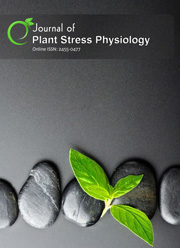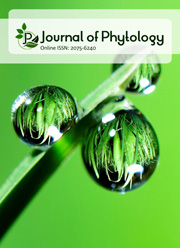Efficacy of jerangau merah (Boesenbergia stenophylla R.M. Smith) crude root extracts for suppressing Collectotrichum gloeosporiodes Penz. associated disease of chili (Capsicum annum L.)
DOI:
https://doi.org/10.25081/jpsp.2025.v11.9038Keywords:
Biological control, Chili (Capsicum annum L.), Collectotrichum gloeosporioides, Crude root extract, Jerangau merah (Boesenbergia stenophylla R.M. Smith)Abstract
Environmental pollution issues have prompted the exploration of biological control as a promising alternative for managing diseases in chili plants. However, the use of plant extracts and microbial inoculants to promote growth and control diseases in chili, particularly in Malaysia, especially Sarawak, is limited. The primary objective of this study was to assess the potential of Trichoderma and Boesenbergia stenophylla R.M Smith in suppressing Colletotrichum gloeosporioides Penz., a pathogen associated with chili (Capsicum annum L.) diseases. The efficacy of B. stenophylla in inhibiting C. gloeosporioides showed a maximum PIRG (Percent Inhibition Relative to Control Growth) value of 86.26% on day 8. The formulation of B. stenophylla (jerangau merah) demonstrated potential in suppressing chili anthracnose disease both in vitro and under field conditions. Two Trichoderma spp. isolated from the soil of rehabilitated forest floors were evaluated for their in vitro antagonism against C. gloeosporioides. T. harzianum gradually inhibited the growth of C. gloeosporioides starting from day 2, completely overtaking it by day 8 with a PIRG of 87.40%. T. harzianum inoculants proved effective in controlling the pathogen in vitro and enhancing the growth of chili seedlings, in addition to inhibiting C. gloeosporioides. Meanwhile, T. longibrachiatum also gradually inhibited the growth of C. gloeosporioides, achieving a PIRG of 56.02% by day 8. The presence of Trichoderma in the rhizosphere and on the roots generally improved the root growth of chili seedlings compared to controls inoculated with sterile distilled water (SDW) and those treated with B. stenophylla extracts. Chili seedlings responded better to T. harzianum inoculants than to T. longibrachiatum inoculants and B. stenophylla extracts. By week 8, seedlings inoculated with T. harzianum showed the highest root growth with 26.87 cm in root length and 9.48 g in root fresh mass. Disease assessment studies indicated that T. harzianum exhibited the greatest potential as a biocontrol agent (BCA), reducing disease incidence and severity by 53% and 51%, respectively. Similarly, application of B. stenophylla powder slowed down infection progression and improved chili plant growth, with disease incidence and severity values of 72% and 60%, respectively. Overall, the study demonstrated the efficacy of B. stenophylla in protecting and enhancing the growth of chili plants, potentially replacing harmful chemicals. Both B. stenophylla and T. harzianum inoculants showed effectiveness against C. gloeosporioides, suggesting their potential development as biocontrol agents. Assessment of plant-microbe interactions indicated that T. harzianum mediated induced resistance by producing inducible compounds such as peroxidase (PO). Single inoculation with T. harzianum was most effective, followed by a mixture of T. harzianum + B. stenophylla, delaying symptom onset and reducing disease incidence and severity. In conclusion, the findings suggest that Trichoderma inoculants and B. stenophylla extract powder are effective against C. gloeosporioides while promoting plant growth. Further research into formulation, application frequency, and techniques is essential to maximize their potential as BCAs against Colletotrichum diseases in chili plants.
Downloads
References
Ahmad, F., & Jantan, I. (2003). The essential oils of Boesenbergia stenophylla R. M. Sm. As natural sources of methyl (E)-cinnamate. Flavor and Fragrance Journal, 18(6), 485-486. https://doi.org/10.1002/ffj.1227
Avila-Adame, C., Olaya, G., & Köller, W. (2003). Characterization of Colletotrichum graminicola isolates resistant to strobilurin-related QoI fungicides. Plant Disease, 87(12), 1426-1432. https://doi.org/10.1094/PDIS.2003.87.12.1426
Boseland, P. W., & Votaven, E. J. (2003). Peppers: Vegetable and spice capsicums. (1st ed.). England: CAB International.
Campbell, C. L., & Madden, L. V. (1990). Introduction to plant disease epidemiology. New York, US: John Wiley & Sons.
Harp, T. L., Pernezny, K., Ivey, M. L. L., Miller, S. A., Kuhn, P. J., & Datnoff, L. (2008). The etiology of recent pepper anthracnose outbreaks in Florida. Crop Protection, 27(10), 1380-1384. https://doi.org/10.1016/j.cropro.2008.05.006
Kasarkar, A. R., & Kulkarni, D. K. (2011). Phenological studies of family Zingiberaceae with special reference to Alpinia and Zingiber from Kolhapur region (MS) India. Bioscience Discovery, 2(3), 322-327.
Khewkhom, N., Sangchote, S., & Sungsiri, T. (2012). Postharvest control of fruit rot of mangosteen by plant extracts from Zingiberaceae family. I International Conference on Postharvest Pest and Disease Management in Exporting Horticultural Crops-PPDM2012, 973, 119-124. https://doi.org/10.17660/ActaHortic.2013.973.14
Mahmodi, F., Kadir, J. B., Puteh, A., Pourdad, S. S., Nasehi, A., & Soleimani, N. (2014). Genetic Diversity and Differentiation of Colletotrichum spp. Isolates Associated with Leguminosae Using Multigene Loci, RAPD and ISSR. The Plant Pathology Journal, 30(1), 10-24. https://doi.org/10.5423/PPJ.OA.05.2013.0054
Montri, P., Taylor, P. W. J., & Mongkolporn, O. (2009). Pathotypes of Colletotrichum capsici, the causal agent of chili anthracnose, in Thailand. Plant Disease, 93(1), 17-20. https://doi.org/10.1094/PDIS-93-1-0017
Tewtrakul, S., Subhadhirasakul, S., Puripattanavong, J., & Panphadung, T. (2003). HIV-1 protease inhibitory substances from the rhizomes of Boesenbergia pandurata Holtt. Songklanakarin Journal of Science and Technology, 25(4), 503-508.
Vanderplank, J. E. (1984). Disease Resistance in Plants. (2nd ed.). New York, US: Academic Press.
Yoon, M.-Y., Choi, G. J., Choi, Y. H., Jang, K. S., Cha, B., & Kim, J.-C. (2001). Antifungal activity of polyacetylenes isolated from Cirsium japonicum roots against various phytopathogenic fungi. Industrial Crops and Products, 34(1), 882-887. https://doi.org/10.1016/j.indcrop.2011.02.013
Published
How to Cite
Issue
Section
Copyright (c) 2025 Journal of Plant Stress Physiology

This work is licensed under a Creative Commons Attribution 4.0 International License.



 .
.